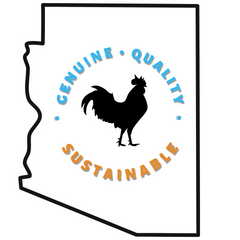Hatching Egg Tips
- Have your incubator ready and running at operating temperature.
- Upon receiving your eggs, let your eggs set at 50 to 60 degrees room temperature (do not refrigerate). Eggs should set for 6 to 12 hours prior to putting into your incubator.
- Temperature should be set according to your incubators' manual. Temperatures in general are:
Chicken, Bobwhite Quail, Chukar Partridge, Pheasant, Guinea: 99 3/4
Peacock, Goose, Turkey 99 1/4
Ducks 99 1/2
Temperatures above are for forced air incubators. Still air incubators require a slightly higher temperature. Still incubators require 1 to 3 degrees higher operating temperature.

- During incubation, the eggs should be turned 3 to 5 times per 24 hours if you do not have an automatic turner. (make sure your hands are clean when touching the eggs!) Stop turning the eggs 3 days prior to hatch or remove turner from incubator if using automatic turner. Eggs turned more frequently increases hatchability. Eggs turned odd number of times and on a regular schedule also increases hatchability. In still air models, when turning your eggs, move them to different locations each time to offset temperature variations which occurs in incubators with no fans.
- Humidity: Again follow your incubators' manual. In general moisture levels should be: (for first 18 days)
50 to 55 percent relative humidity
83 to 87 % f on a wet bulb thermometer
Three days prior to hatch, humidity level should be:
65 % F Relative humidity
89 - 90 % F on a wet bulb thermometer. Excessive drying because of low humidity will cause chick to stick to the shell and fail to survive. Also remember too much humidity can cause hatching problems also.


